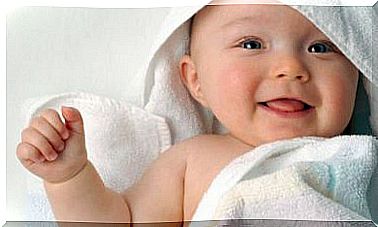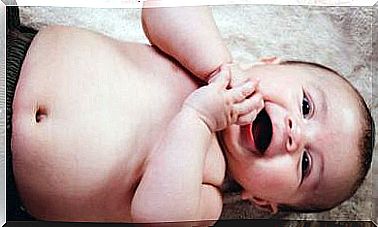Early Childhood Cavities
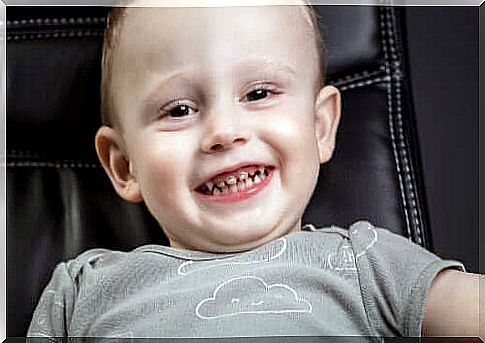
Early childhood caries is a very common pathology in children’s mouths. She progresses quickly, being able to destroy the child’s teeth. Fortunately, this can be avoided.
In the following lines, we’ll tell you everything you need to know to prevent bacteria and sugars from combining and damaging your baby’s oral cavity.
What are early childhood cavities?
Early childhood cavities, also known as baby bottle cavities , are carious lesions that occur on the temporary parts of young children. This infectious disease is characterized by rapid and aggressive progress.
It usually starts shortly after the eruption of baby teeth and manifests itself on the smooth surfaces of the anterior teeth, an uncommon location for caries, being more frequent in the upper incisors.
These caries are associated with the large exposure of temporary teeth to sugary liquids. For example, formula milk, juices, soft drinks and other artificially sweetened beverages.
Sugar remains adhered to tooth surfaces and is used by bacteria in the mouth. They produce acids that remove minerals from the teeth, progressively destroying them and thus giving rise to cavities.
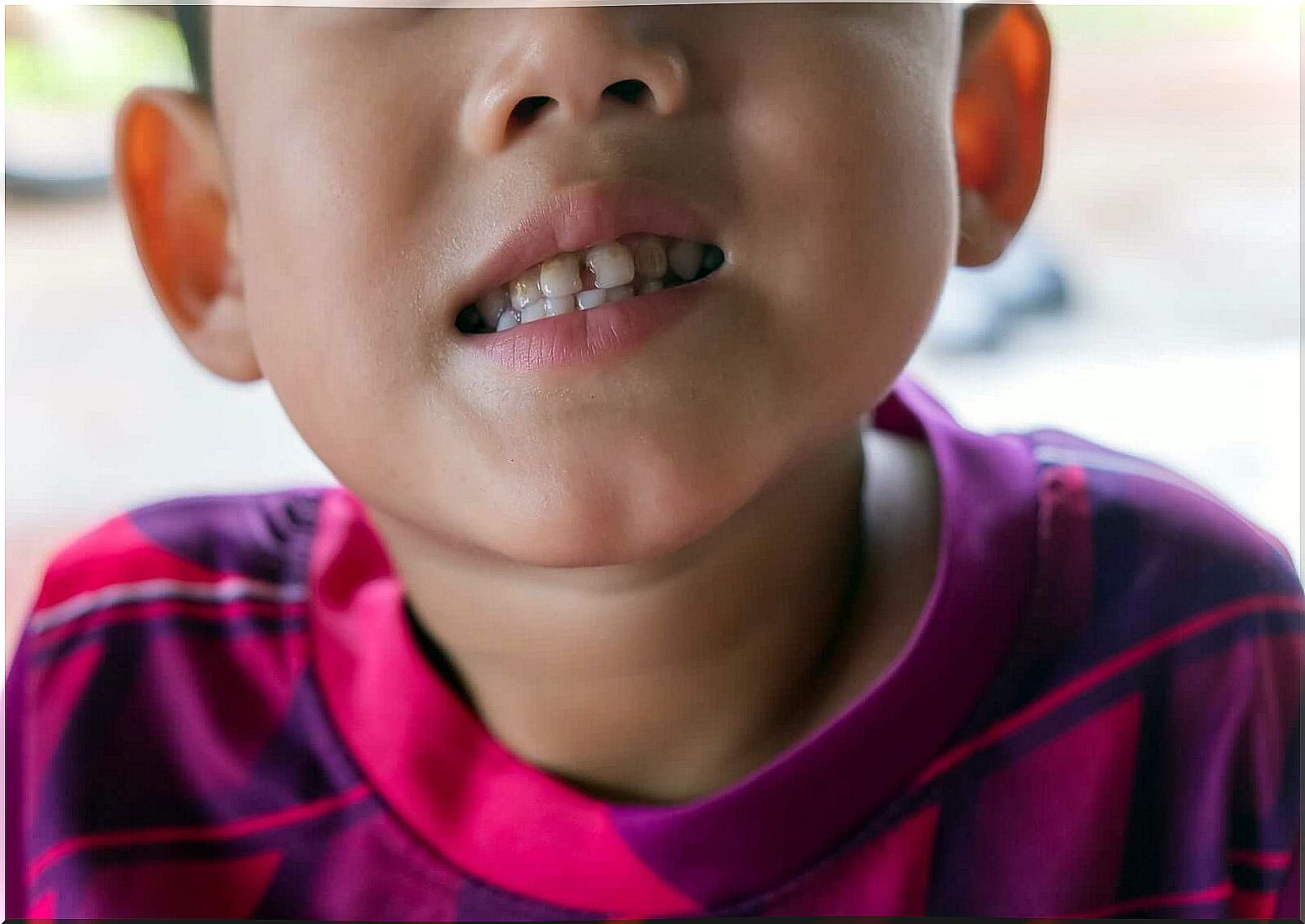
What do early childhood cavities look like?
As already mentioned, the most frequent location is in the upper front teeth, although they can occur in any of the temporary teeth .
The onset of the disease is a lesion called a white spot , a change in the opacity of the tooth that, in general, only the dentist’s eye can diagnose. It then progresses to dark, black or brown spots. They have a semicircular or half-moon shape and extend along the lateral walls of the tooth, from the gum to the cutting area.
As the disease progresses, the child may experience pain, swelling around the tooth, infections and fractures of the tooth crown or loss. If the pathology runs its course, it is common to see young children with only the remains of the roots of the baby teeth in their mouths.
This disease complicates normal functions: it makes it difficult for the child to chew and speak. In addition, with the loss of the distance that the baby teeth must maintain in relation to the definitive ones, the bad positioning of the neighboring teeth or the permanent ones at birth is favored.
The aesthetic and social factor is also a complication that must be taken into account. The child may be teased or have an impaired self-image.
If you notice any of these manifestations in your child’s mouth, do not hesitate to consult a pediatric dentist immediately. The sooner the disease starts to be treated, the better the prognosis and the less invasive the treatment.
Causes of early childhood caries
We have already said that the main origin of cavities in early childhood is the frequent contact of temporary teeth with sugar. In this sense, newly born teeth or teeth with hard tissue defects, such as hypoplasia, are the most vulnerable.
The sugary liquids associated with this disease are formula milk, juices and soft drinks. There is also a relationship between the disease and children who use pacifiers soaked in syrup, honey or sugar. The chances of lesions are increased if sugary drinks are administered and remain in the mouth while the baby sleeps.
The prolonged use of the bottle, the use of the bottle by the child to play during the day or fall asleep and keep it in the mouth during the night are factors that aggravate the situation even further. The absence of oral hygiene habits also worsens the condition.
Breastfeeding on demand and prolonged, by itself, is not associated with this pathology. However, if combined with poor oral hygiene, the habit of breastfeeding while the child sleeps and the consumption of other carbohydrates, it can become cariogenic.
There are also family practices and habits that favor the bacteria responsible for caries reaching the baby’s oral cavity early. Kissing the baby’s mouth, blowing or tasting their food and cleaning the pacifier with their own saliva are attitudes that contribute to the development of the disease.
How can cavities be prevented?
As a mother or father, you can prevent early childhood caries by practicing food and hygiene habits to take care of your child’s mouth. Below, we’ll share some tips to prevent this disease:
- Correct use of the bottle : use the bottle only to administer formula milk, breast milk or water without added sugar. Avoid using the bottle to give juices or other sugary drinks. They should be avoided before 6 months, and if you decide to offer them after that age, try to reduce the amount and frequency and give them in cups or cups. It is recommended to start using the cup before the child’s first birthday.
- Do not use sugary drinks to put the baby to sleep : it is important to teach the baby to sleep without a bottle. If this is not possible, put water in it instead of milk or sugary drinks.
- Proper use of the pacifier : avoid using it for longer than two years of age. Never dip it in sweet substances, juices, syrups or honey.
- Promote healthy eating : try to give your child a variety of natural and nutritious foods. Avoid or reduce your consumption of processed foods that are high in sugar. Limit sweets and reduce the amount of juice offered. The best drink is water. Remember that, up to 6 months, your baby should be fed only breast milk or, if this is not possible, formula recommended by the pediatrician.
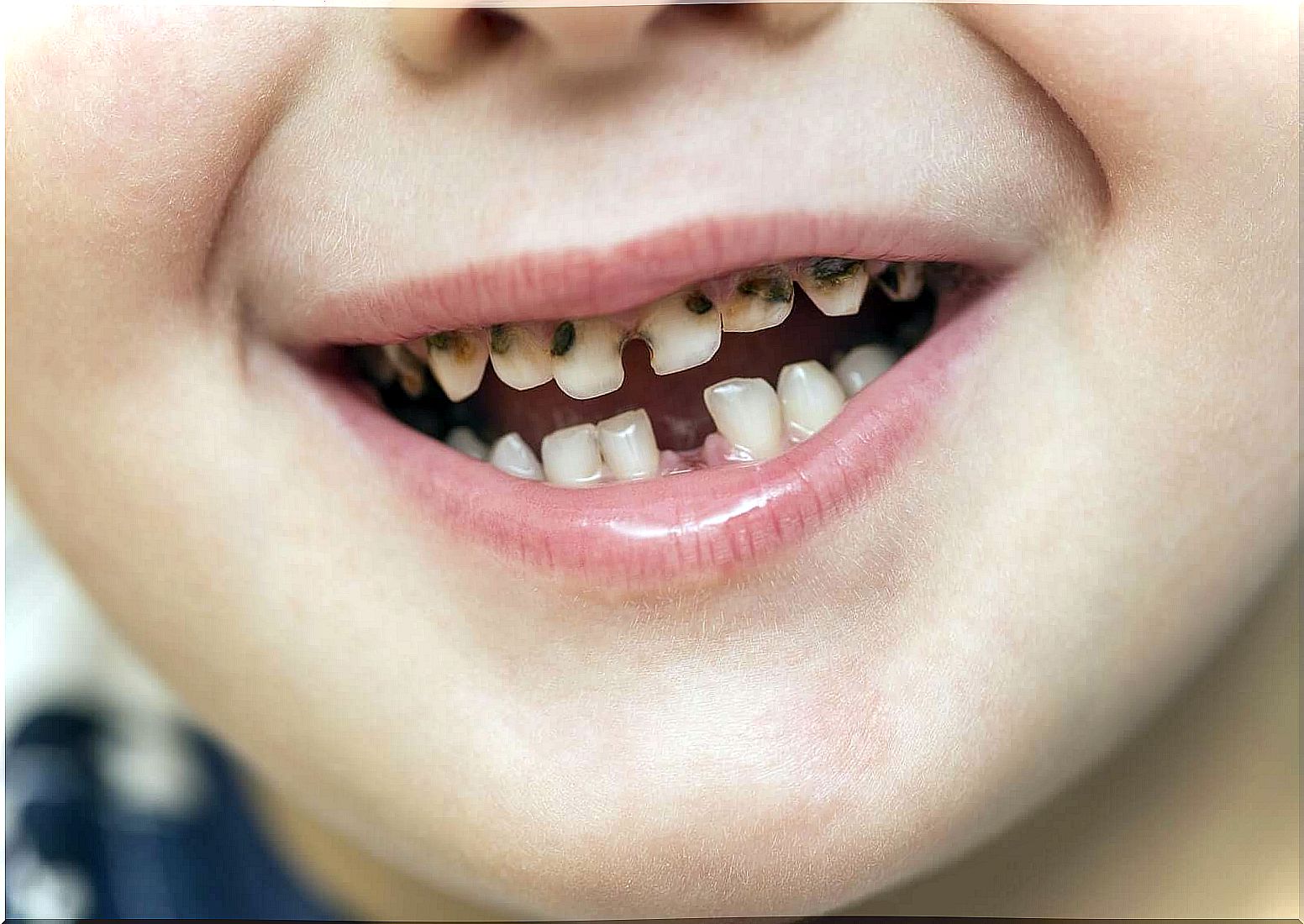
- Oral hygiene : Clean your baby’s mouth after you feed him, even if he still doesn’t have teeth. Use gauze or a clean damp cloth to sanitize your gums. As soon as the first tooth comes out, you should start brushing it. As your child grows, you can add toothpaste and floss to complement the cleaning. Remember that you should brush until she is old enough to do it herself.
- Use of fluoride : Fluoride is an element that helps prevent cavities. It can be administered through drinking water, in drops or tablets. It can also be administered through toothpastes and therapeutic forms in the dental office. The dentist will always be able to indicate the most suitable way, according to the child’s age and particular needs.
Your baby’s mouth is your responsibility
You must make the first appointment with the pediatric dentist before the child’s first year of life. The professional will not only check that your child’s mouth is okay, but will also give you the necessary guidance so that you can take good care of her.
Pay attention to your child’s mouth, watching him during the cleaning and when the child lifts his lips. If at any time you notice white or dark spots or any damage to the dental elements, do not hesitate to make an appointment with the dentist so that this can be resolved.
Avoid contagious habits. Do not share utensils that have contact with your child’s mouth to prevent your saliva (which may contain bacteria) from mixing with your baby’s. Avoid tasting the child’s food, sucking on their pacifier to clean it or kissing their mouth. If you have active caries, treat them to lower the bacteria level.
Now you know how to take care of your child’s mouth to prevent cavities in early childhood. You may need to make some changes or incorporate new habits, but it will all help maintain your child’s oral health.





